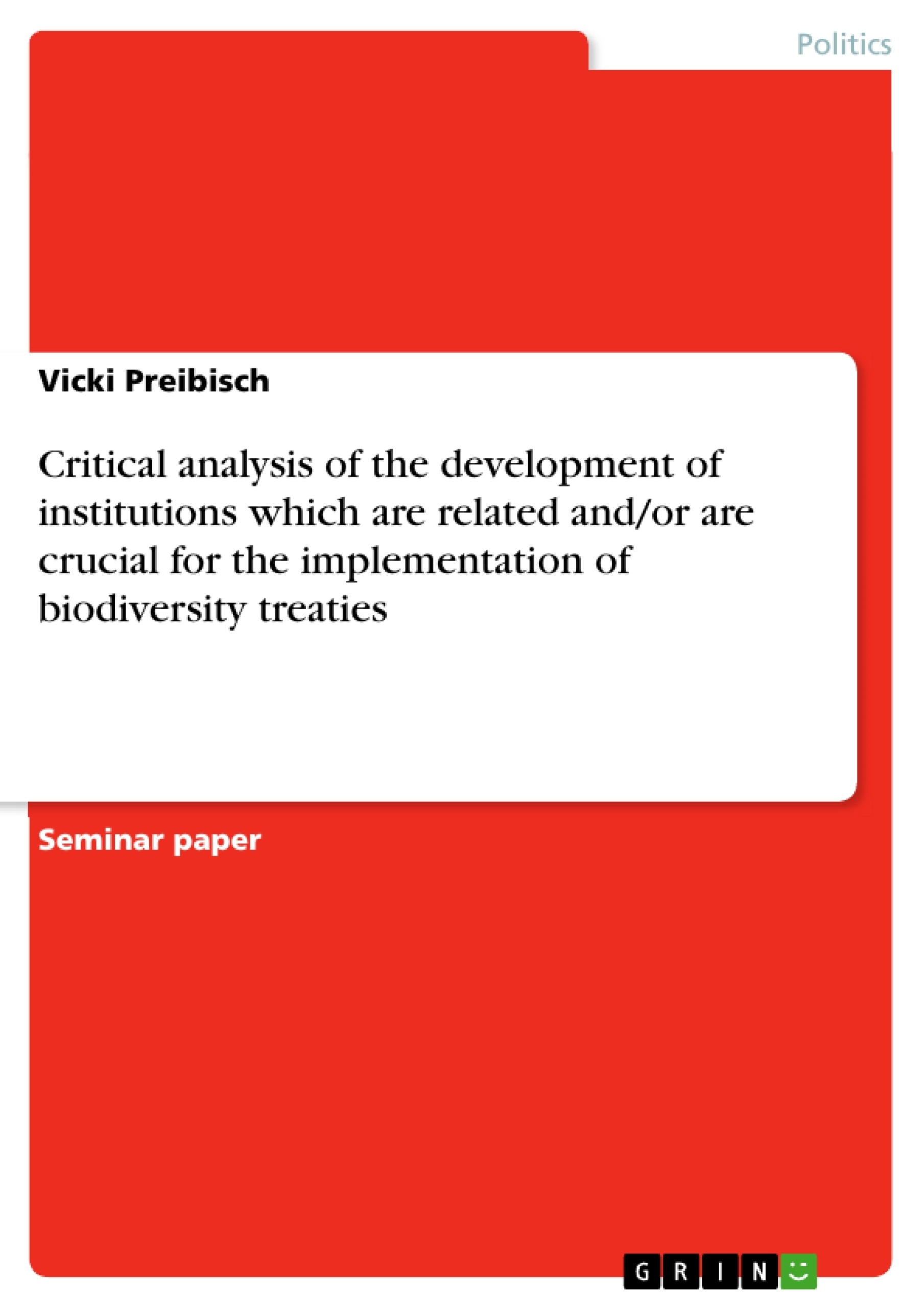Environmental awareness is as great as ever before thanks to enhanced global cooperation of global actors. One of these actors are global institutions such as UNEP and the GEF which have been criticised for either not being effective, too bureaucratic or only representing Northern policies. Main focus of this research paper lies on biodiversity and its related treaties such as the Convention on Biodiversity and the Cartagena Protocol on Biosafety. Further, this paper looks into the development of Global Institutions over the last century. The paper concludes that global institutions are crucial and important for global politics despite some unresolved challenges, such as on benefit sharing from genetic resources.
Inhaltsverzeichnis (Table of Contents)
- Abstract
- Section I - Introduction
- Introducing the Research Paper
- Section II - Environmental Institutional Framework
- Global Institutions
- Development of Global Institutions
- The United Nations Environment Programme
- The Global Environment Facility
- Development of Global Institutions
- Global Institutions
- Section III - Biodiversity
- Reasons to Care about Biodiversity
- International Policies on Biodiversity
- The Millennium Ecosystem Assessment
- The Convention on Biodiversity
- The Cartagena Protocol on Biosafety
- Global Governance
- Section IV - Summary of Findings
- Conclusions
- Bibliography
Zielsetzung und Themenschwerpunkte (Objectives and Key Themes)
The primary objective of this research paper is to analyze the development of institutions related to the implementation of biodiversity treaties. This paper examines the roles of global institutions such as UNEP and the GEF in promoting environmental sustainability, particularly regarding biodiversity. It analyzes the development of global institutions over time and their effectiveness in addressing environmental challenges.
- Development of global institutions and their role in environmental governance
- Biodiversity conservation and the implementation of related treaties
- The effectiveness of global institutions in achieving environmental goals
- Challenges faced by global institutions in addressing environmental issues
- The importance of international cooperation and collaboration for environmental protection
Zusammenfassung der Kapitel (Chapter Summaries)
The introduction presents the research paper's focus on the development of institutions relevant to biodiversity treaty implementation. It introduces key concepts such as biodiversity, ecosystems, and global institutions, highlighting the importance of these institutions in global politics and environmental governance.
Section II examines two prominent global institutions, UNEP and GEF, and their roles in addressing environmental issues, particularly biodiversity. It explores the development of global institutions over time and their functions within the international environmental framework.
Section III delves into the importance of biodiversity and the international policies designed to protect it. It explores the Millennium Ecosystem Assessment, the Convention on Biodiversity, and the Cartagena Protocol on Biosafety, highlighting the ongoing debate on the effectiveness of these international instruments.
Schlüsselwörter (Keywords)
This research paper focuses on key concepts such as global institutions, biodiversity, environmental governance, international cooperation, treaty implementation, environmental policy, and the effectiveness of international organizations in achieving environmental goals.
- Quote paper
- Vicki Preibisch (Author), 2006, Critical analysis of the development of institutions which are related and/or are crucial for the implementation of biodiversity treaties, Munich, GRIN Verlag, https://www.grin.com/document/67975



